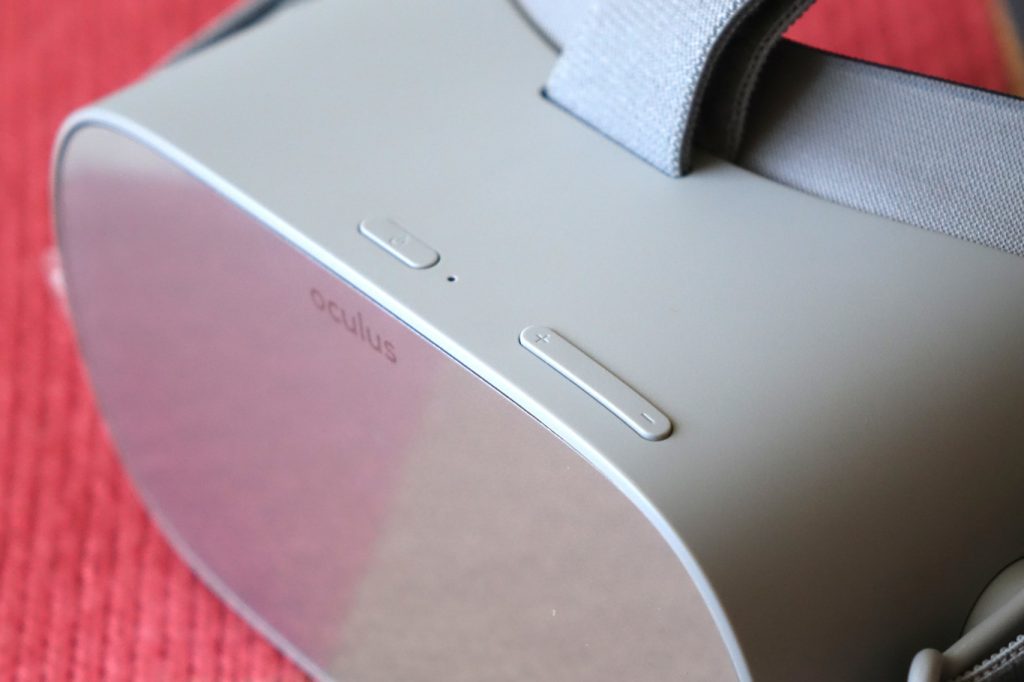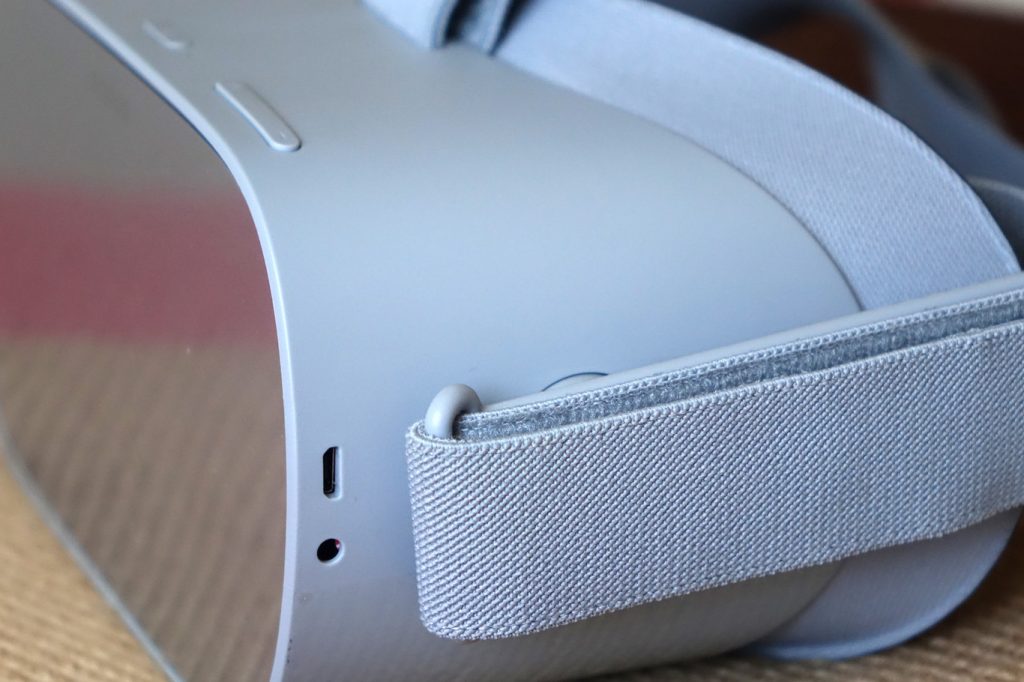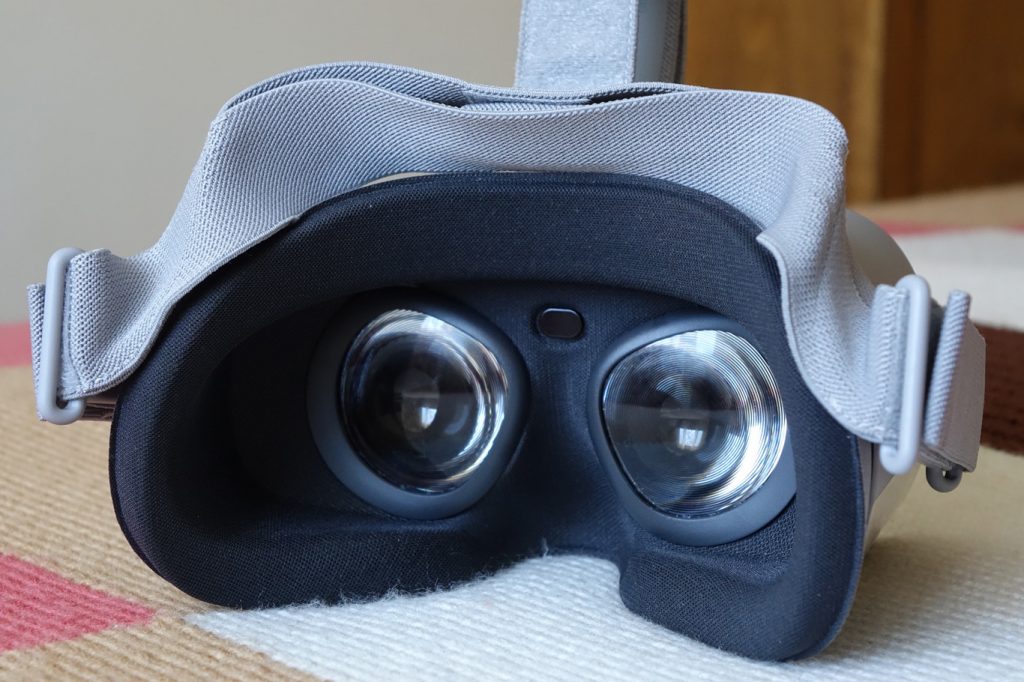
Oculus VR and Xiaomi know what they are up to. Virtual reality (VR) is not having the impact that some companies have predicted during the last five years, which is the period in which they have “cooked up” the commercial solutions that we can find nowadays in the market, such as Oculus Rift, HTC Live or Sony PlayStation VR. Some of these virtual reality glasses offer a fairly successful experience, but require the support of a very powerful PC that is not available to everyone, which, coupled with its high price, causes many users can not access them. This is the most relevant handicap of Oculus Rift and HTC Vive,even though its price has dropped significantly.
Fortunately, the market also offers us more affordable options, such as Samsung Gear VR, or even the much more spartan Google Cardboard. Both proposals use our smartphone as a screen, which, obviously, greatly reduces its cost. But the experience they offer us is much less successful than that offered by Oculus or HTC. And at an intermediate point between all these options is PlayStation VR, with a lower cost than Rift and Vive, assuming that we already have a PS4 at home, but that suffers from some technical limitations, and, above all, from a catalog of titles still little relevant.
Against this background it is clear that what they want Facebook, which, as you know, is the owner since 2014 of Oculus VR, and Xiaomi, which is its companion adventure on this trip, is to place on the market a pair of virtual reality affordable and with a hardware capable of offering users a successful experience. A balance that, until now, none of the virtual reality glasses that we can find in the market has reached.
The role of Xiaomi in this alliance is not other than to take charge of the manufacture of the glasses, taking advantage of the capacity of production of the Chinese company on a large scale and with contained costs. And the role of Oculus, is, of course, to contribute its technology. Let’s see what experience these a priori interesting virtual reality glasses really offer us.
Oculus Go: Technical Specifications and Features
The first impression that these glasses transmit immediately after extracting them from their box is positive. Its finish is not at the level of the Oculus Rift and the HTC Vive, but, still, it’s good. And the fact is that the plastic of the chassis does not reflect the fragility of which suffer a good part of the low-priced visors for smartphones that we can find in the market today.
In addition, the foam material that facilitates the contact of the glasses with our face and the Velcro strips that make it possible to fix them to our head are of sufficient quality to look from one to another in this section to more expensive models, such as the two that I mentioned in this paragraph. So in regard to its finish I have nothing to object, especially considering that the most economical version of these glasses, which is the one with a storage capacity of 32 GB, costs 219 dollars.
Unlike other more expensive virtual reality glasses, which have OLED panels, the Oculus Go incorporate two LCD panels, something understandable if we value the price. Oculus has not revealed what is the technology of the panels that have been decanted, but I suspect that they are TN due to its low cost, minimum response time, and also because one of the handicaps of these panels, which is its small angle of visualization, in a pair of glasses like these, it is hardly relevant (we should not confuse the viewing angle of the panels with the field of vision offered by the glasses).
Of course, with regard to the resolution of LCD panels, it is clear that Oculus “has cast the rest”. And in this particular parameter, in which the panels reach a joint resolution of 2560 x 1440 points (1280 x 1440 points for each eye), the Oculus Go significantly outperforms the most advanced VR glasses that we can find nowadays. the market, which are other than the Oculus Rift and HTC Vive, which are satisfied with a slightly lower 2160 x 1200 points. However, the OLED panels of these last glasses work at 90 Hz, while the Oculus Go LCDs do not exceed 72 Hz.
One last element of the hardware of these virtual reality glasses that is worth paying attention to is its microprocessor. The Qualcomm Snapdragon 821 that they incorporate is responsible for their independence from a PC or any other device, but this strategy implies that the Adreno 530 graphic logic of this SoC must carry out the rendering of virtual reality images.
The interesting thing in this area is to find out what sacrifices in terms of graphic quality it is necessary to make so that the GPU of the Qualcomm processor ( do not forget that we can find it in many smartphones of two generations ago ) is able to reach a sustained rate of images close to the 72 FPS at a resolution of 2560 x 1440 points with stereoscopic rendering. We’ll find out a little later.
| OCULUS GO | |
|---|---|
| PRODUCT | Autonomous virtual reality glasses (do not require the use of a PC or any type of cable connection) |
| TYPE OF PANEL | LCD |
| ASPECT RATIO | 16: 9 |
| RESOLUTION | QHD (2,560 x 1,440 points) |
| REFRESH FREQUENCY | 72 Hz |
| SOC | Qualcomm Snapdragon 821 |
| WIRELESS CONNECTIVITY | WiFi and Bluetooth |
| PORTS | Micro-USB and 3.5mm headphone jack |
| STORAGE CAPACITY | 32/64 GB |
| SOUND | 3D stereo |
| ELEMENTS CONTAINED IN THE PACKAGE | Virtual reality glasses, controller, strap for the controller, separator for prescription glasses, USB cable, AA battery and cleaning cloth |
| PVP | 219 dollars (32 GB) / 269 dollars (64 GB) |
| PRICE ON EBAY | 204.66 dollars + shipping (32 GB) |
Start-up: The simplest
One of the most interesting features of these RV glasses is their ability to operate autonomously, so we can enjoy them without connecting them to a PC, a video game console or any other device. Logically, this strategy involves two important advantages: we save the cost of this device “ally”, which is high, and, in addition, we get rid of those cables that hold together glasses like the HTC Vive, Oculus Rift or PlayStation VR to the PC or console that is responsible for solving all the graphical load that entails the generation of the virtual environment.
Even so, to configure the Oculus Go we will need to have our smartphone. The first thing we should do is install the Oculus app on it, which is available for both Android and iOS. Once we have it on our mobile we will initiate it and ask for permission to activate Bluetooth connectivity, in case we have not previously enabled it. This step is necessary because the communication between the virtual reality glasses and the app is going to be carried out through this wireless link.
When the synchronization between our smartphone and the glasses is carried out successfully, the Oculus app wizard will ask us to insert an AA battery inside the wireless controller that accompanies the glasses. And, afterwards, we will indicate with which hand we want to handle it, as well as the connection parameters to our WiFi network (SSID and password). In this way, RV glasses can directly access the Internet, allowing us to install games and applications with complete freedom, provided that we do not exceed their storage capacity (they are available with 32 and 64 GB).
In the image that you have below this paragraph you can see that in the upper part of the chassis of the glasses there are two buttons . As you can guess, one serves to turn them on and off, and the other to manipulate the volume of the integrated stereo speakers. Because yes, the Oculus Go incorporate their own speakers, so it is not necessary to use headphones while we are using them.
In the following picture you can see the two ports that incorporate the Oculus Go on the left side of its chassis. One of them is the micro-USB connector to which we have to resort to charge the battery of the glasses, and the other a 3.5 mm minijack that allows us to connect headphones. However, as I mentioned in the previous paragraph, we can do without them because the glasses incorporate their own speakers. And, as we will see in the next section of the article, its sound is quite result.
This is the experience offered by the autonomous and affordable RV
To interact with Oculus Home, which is the interface of these virtual reality glasses, we need to use the controller that you can see in one of the photographs in this section of the analysis. This peripheral is a simplified version of the control controls that accompany other more ambitious VR glasses, such as Rift or Vive, but even so, it fulfills its function . With it we can point as we would with a laser pointer towards the option of the menus that we want to select, and the activation will be carried out by pressing the trigger or the selection button housed in the upper part of the controller, within reach of our thumb.
This peripheral also incorporates a touch panel that, as if it were a touchpad, helps us to move quite comfortably through the Oculus Home interface. As I advanced a few lines above, the experience offered in this context is positive, although to play is limited by the presence of only three action buttons (the trigger, the button integrated in the touch surface and the button selection).
And we reach the climax of this analysis. What experience do Oculus Go offer us with the games? Here I am afraid that there is a lot of “cloth to cut”. During the first minutes the experience is not very different from that offered by other more ambitious and expensive VR glasses, such as Vive, Rift or PlayStation VR (the differences between these models, which are important, we leave them for another debate). And it is not because the continuity of the images and the sensation of immersion that they provide us compete with those of much more expensive glasses.
However, to make possible the cadences of images necessary to recreate the virtual environments in a convincing way it is evident that game programmers for Oculus Go are forced to penalize a section: graphic finishing. The Adreno 530 graphics logic of the Snapdragon 821 microprocessor is not bad, but, obviously, it can not rival the GPU that incorporates a next-generation PC that we can connect to HTC Vive or Oculus Rift. And this means that the textures and the level of detail of the graphics are clearly below what we can achieve with a PC and the glasses that I just mentioned, and even with PlayStation VR and a PS4.
It is not easy to describe with words what are the graphics of the games of Oculus Go, but I think the most successful thing for you to guess would be to place them halfway to the graphic finish offered by the PlayStation 2 generation and the first Xbox, and the PlayStation 3 and Xbox 360. They are superior to those of these first two consoles, but much lower than the graphics that gave us the most successful titles of the previous generation machines.
In any case, with the Oculus Go we can do more things, in addition to using them to play. In the Oculus Home application store you will find three-dimensional videos that offer virtual tours (some are really cool), social applications and many other apps that a priori are interesting. Even so, if I have to choose what scenario of use attracts me to these glasses, beyond the games, my choice is very clear: the reproduction of movies and series.
In Oculus Home we can get service applications such as Netflix, Hulu or Bigscreen (the latter is very interesting because it allows us to send streaming video from a Windows PC to the Oculus Go), among other options. I have been able to prove quite deeply the experience offered by these virtual reality glasses with Netflix, and I liked it a lot. And you really have the feeling of sitting in your own private room in front of a TV of about 75 inches, which is not bad.
Of course, although the QHD resolution of these glasses is one of their strengths, and also one of the sections in which they can address other more expensive proposals, the pixels at such a small distance are visible, which reminds me of the need to have even higher resolutions if we hope that the experience offered by virtual reality is really achieved.
As far as the sound is concerned, the truth is that the speakers integrated in the Oculus Go have surprised me positively. The processing of the sound carried out by the glasses is sufficiently achieved so that we have the feeling that the audio really surrounds us, so the experience is very positive. The level of detail and dynamics of the integrated speakers can not rival those offered by high-end headphones. But, honestly, I could use the Oculus Go with games and video with integrated speakers without missing a headset.
Finally, if we stick to ergonomics, these RV glasses meet. They do not seem too heavy, which together with the firmness of the Velcro straps that allow us to keep them attached to our head makes it easy to use them for a long time without any discomfort in the neck or neck. Of course, even so it is not advisable to overdo it. An important note: next to the Oculus Go find a flexible rubber separator that allows us to use prescription glasses along with virtual reality. I have not been able to prove it because I do not use glasses, so I am afraid that I can not confirm if it correctly fulfills its function.




